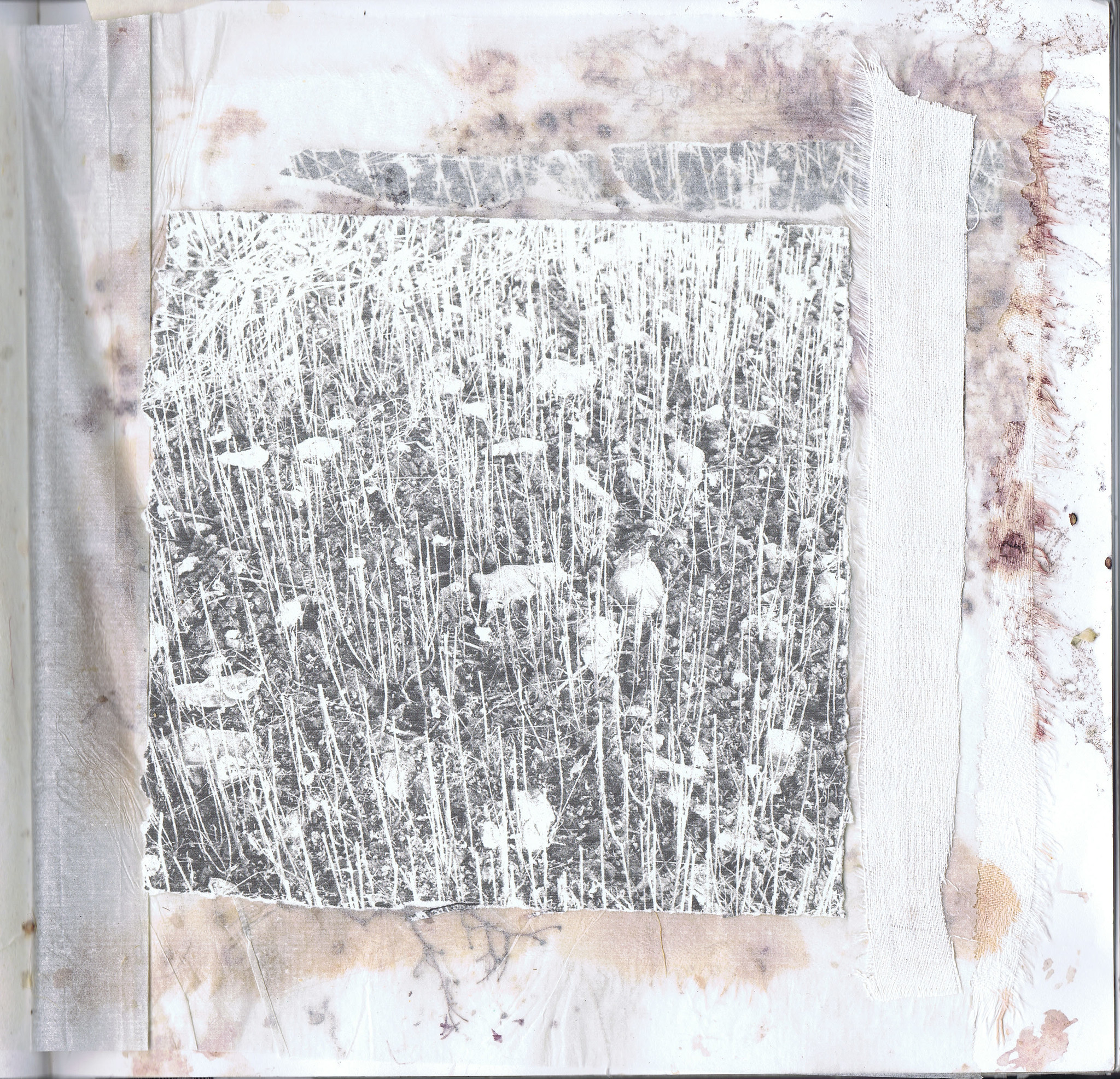Bioscleave/Blue Particle Cloud/Diagram.
Biosphere/Archipelago : Sun Drawing/Cyanotype
The sun has gone mad and stripped the earth of its ionosphere. For decades blasting radiation has poured upon earth, melting the polar caps and turning permafrost into streams, rivers, oceans. Huge deltas have been built, lakes formed, seas have risen.
The Drowned World, JG Ballard.
blueprints, cyanotype, alternative printing processes, light drawings,
precision and indeterminacy, human form, ecology,
environments, contemporary art practice
ARCHITECTURAL Body
An ORGANISM that PERSONS
Gins and Arakawa 2002
Although the human condition is a crisis condition if ever there was one, few individuals and societies act with the dispatch a state of emergency requires. The fact that the human condition is a crises condition gets routinely covered up, with culture invariably functioning to obscure how dire the condition is and to float it as bearable
If organisms form themselves as persons by uptaking the environment, then they involve not only bodies but domains, spheres of activity and influence
Start by thinking of architecture as a tentative constructing toward a holding in place. Architecture's holding in place occurs within and as part of a prevailing atmospheric condition that others routinely call biosphere but which we, feeling the need to stress its dynamic nature, have renamed bioscleave
Procedural Architecture/Architectural Body
Gins and Arakawa
The role of architecture as a tool for researching the body-environment towards the implementation of these considerations is paramount
The goal of an experimental teaching and learning space based on architectural procedures would be that the process of design and construction would allow students/staff to rethink, re-imagine and enact the curriculum
An Arakawa and Gins Experimental Teaching Space/A Feasibility Study 2013
Jondi Keane
Contexts:
Practice-based research , Research , Studio practice
Artforms:
Painting , Mixed media , Drawing
Tags:
Bioscleave, Architectural Research, Arakawa and Gins,
cyanotype, diagram, collage, texts, current concerns, contemporary practice
Cyanotype from a site drawing, Space for Peace, Winchester Cathedral
Shroud
Richard Stillman
Yard and Metre Event, Winchester
As the marks resonated, did they sound true?
Could we tolerate margins of error or latitude?
Is there strength in that built by blue ink?
It is hard to see without certainty.
Why have they flown, gathered, shrouded?
Is the date significant? A memorial?
Or is it white noise reverberating,
striking parallels, refusing focus, insisting?
The shape of the cross is still distinct
but opening out, refusing definition,
never quite caught as an intention,
pinned on dimensions it wants to refuse.
When objects or atmospheres collide energy is transferred, a new force may be created. And, as forensic scientists can attest, when objects touch they exchange traces, each leaves something of itself with the other.
This is why artists enjoy collaborating. Working with another artist can give a jolt of inspiration, a spark of creative thinking, a surge of new skill, the stimulus for a new work. And the experience will leave its mark in some way on each individual’s practice.
The specific ‘collision’ may also result in a work which has its own integrity, which does not belong’ to either party and where their particular contributions merge indistinguishably - in effect fusion takes place.
This is the thinking behind 10 days | Creative Collisions and for The Yard artists and Hyde Writers it was the ideal excuse to come together, to let the shockwaves flow and see what new possibilities emerged. As with all the best creative practice, in science or in art, this has been an experiment, it involved risk, trust and open minds. Whether or not the outcomes are fully resolved they will be filled with potential - and with potency.
Stephen Boyce
Contexts:
Arts in health , Community , Publication , Socially Engaged , Writing
Artforms:
Painting , Performance , Photography , Printmaking , Text
Tags:
Space for Peace, 10 Days, Creative Collisions, Winchester Yard Artists,
Hyde Writers, collaborations. visual art, poetry








































